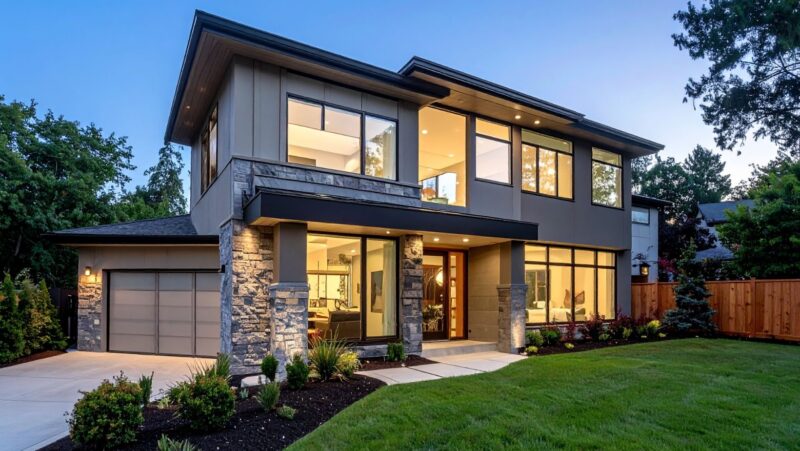
Moving into a new home offers a fresh start, and it’s the perfect time to set a strong foundation for a sustainable lifestyle. When people think of eco-conscious living, they often focus on what happens after they’ve settled in. But the truth is, sustainable living begins before the moving boxes are unpacked. This is especially relevant in places like Miami, where a high-density urban environment intersects with vulnerable coastal ecosystems. Every decision made during your move can impact the surrounding community and environment—from the materials you choose to the services you hire. That’s why it’s important to consider green habits as early as possible in your relocation journey.
1. Declutter Before You Pack
Purging your home of unnecessary items does more than lighten your moving load—it helps reduce waste from the very start. Take time to evaluate what you truly need. Sell, donate, or recycle items that don’t add value to your life. A lighter move means fewer packing materials, smaller vehicles, and less fuel consumption. Be strategic: separate your belongings by category and make decisions based on utility and emotional attachment. Reducing clutter also makes your new space feel calmer and more organized. Sustainability starts with simplicity, and nothing sets the tone better than arriving with only what truly matters.
2. Choose a Green Moving Strategy
Your moving method can significantly influence your environmental footprint. In Miami, traffic congestion and long travel distances make fuel consumption a major concern during relocation. That’s why it helps to choose a local service that understands the city’s layout and traffic patterns. A Miami moving company that prioritizes fuel-efficient trucks, reusable packing supplies, and optimized routes can significantly cut emissions during your move. Look for services that use recyclable materials or even offer reusable crates. Ask whether their operations support carbon offset programs. These small decisions compound into meaningful environmental savings during what is often an emissions-heavy transition.
3. Use Sustainable Packing Materials
Cardboard boxes and plastic bubble wrap often end up in landfills after a single use. Instead, opt for recycled or biodegradable alternatives whenever possible. You can rent reusable plastic bins or use boxes from local grocery stores. Wrap fragile items in old towels, newspapers, or even clothes rather than plastic wrap. Label everything clearly to avoid unnecessary opening and re-packing. Don’t forget to securely seal the bottom of reused boxes to prevent damage. When you take time to pack responsibly, you reduce waste and also keep your belongings protected with materials already available at home.
4. Set Up Energy-Efficient Utilities
Once you arrive at your new home, setting up utilities provides a golden opportunity to make eco-friendly choices. Choose LED lighting, smart thermostats, and high-efficiency HVAC systems. These upgrades reduce your electricity use and lower your monthly bills. Many utility companies offer rebates or discounts for switching to greener alternatives. Even simple changes like installing low-flow showerheads and faucet aerators make a big difference over time. Review your energy provider’s green energy options and see if solar or wind power is available. The sooner you put these systems in place, the more impact you’ll make throughout your stay.
5. Decorate With Sustainability in Mind
Styling your new home can be exciting, but it’s also easy to fall into the trap of fast furniture and wasteful decor. Take a more thoughtful approach by selecting items made from reclaimed, recycled, or sustainably sourced materials. Thrift stores, antique shops, and online marketplaces offer unique, budget-friendly pieces that support a circular economy.

6. Start a Home Composting System
Creating a composting system at home is one of the simplest and most impactful ways to reduce household waste. Instead of sending food scraps to landfills where they emit methane, you can transform them into nutrient-rich soil for your garden or indoor plants. You don’t need a large yard to get started—compact indoor compost bins are available for apartments and small spaces. Focus on composting fruit peels, vegetable scraps, coffee grounds, and eggshells. Avoid meat, dairy, and oily foods, which attract pests. Over time, composting becomes second nature, and you’ll produce less trash while nourishing your green spaces.
7. Create a Water-Wise Living Environment
Water conservation doesn’t require extreme measures—it’s about smarter use. Start with low-flow faucets, toilets, and showerheads that reduce water waste without affecting performance. Consider collecting rainwater for gardening, especially if you live in an area with seasonal rainfall. Install drought-tolerant native plants that thrive with minimal irrigation. Avoid letting taps run unnecessarily, and fix leaks immediately. For laundry, use efficient washers that let you control water levels. All these habits contribute to a water-conscious household. Over time, these small actions lead to noticeable savings on water bills and contribute to sustainable water management in your local area.
8. Incorporate Natural Light and Ventilation
Maximize your home’s layout to make the most of natural light and airflow. Open curtains during the day instead of relying on artificial lighting. Strategically place mirrors to reflect light and brighten darker spaces. For ventilation, open windows in the early morning and evening to cool your home naturally. Use ceiling fans to enhance air circulation and reduce the need for air conditioning. If you’re renovating, consider skylights or larger windows. These changes improve your indoor environment while reducing your dependence on electricity. Natural light and fresh air boost your mood and health—while helping the planet.
Sustainable settling isn’t a one-time decision—it’s a mindset that begins the moment you plan your move and continues through every habit you build in your new home. From eco-conscious packing and smart utility setups to composting and community engagement, every choice plays a role in shaping a more responsible lifestyle. When you intentionally choose green options early, you create a space that reflects your values and respects the environment. Living sustainably doesn’t require perfection. It asks for consistency, awareness, and a willingness to grow. And there’s no better time to start than on day one in your new home.












